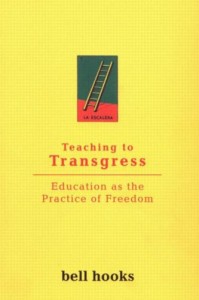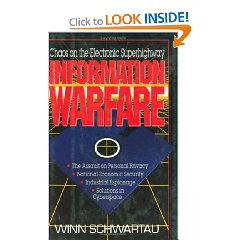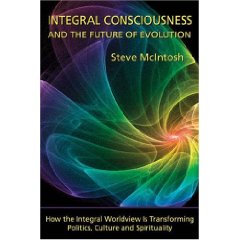January 19, 2008
John Seely Brown
I come to this book eight years after it was first published, and with all the accolades and superb reviews that it has already accummulated, my primary focus here, apart from flagging the book for those that follow my reviews, is to suggest that it is one of the finest overviews available and easily exploited as a primer for undergraduates, graduates, or adults pursuing their own continuing education via Amazon, which is now the hub of the World Brain.
As is my custom, I provide here a few highlights from my flyleaf notes, and then link to ten books that can be used to study discrete aspects of the digital age as I have come to understand it.
This is one of the best books I have found that makes the case that “fiber to the forehead” is next to worthless, it is not about acquiring more information, but rather about the nuanced networking and social interpretations of information in context.
Indeed, they say that with all the technologies now pushing and creating digital information, consumption of this information is only increasing among individuals by 1.7 percent a year.
I value this book, in part because I have seen the U.S. secret intelligence community lose its mind, today spending $60 billion a year of the taxpayer's hard-earned money, to create monstrous and often counter-productive technical program that access the 4% of the information we can steal, while ignoring the 94% that is in 183 languages we do not speak, and more often than not, NOT online.
The authors write well, and gifted turns of phrase about, such as “the radical instability of infopunditry.”
They do a superb job of addressing the ills of technology-centered tunnel vision, a point that Peter Drucker made in Forbes ASAP 28 Aug 98, and I repeated in my keynote in Vegas to the National Security Agency (NSA) IT conference, in the early 2000 timeframe. We've spent the past 50 years on the T in IT, we need to start focusing on the I now.
The authors are eloquent in saying that more of the same is not the answer, and I totally agree. Returning to the secret world, I paraphrase an Australian journalist commenting on the pathologies of secret programs, who said that giving more money to dysfunctional secret agencies is like pouring gasoline on a fire. Right on. I want to reduce the secret budget to $12 billion a year, and redirect everything else to US education, global access to open sources in all languages, and free on demand education to the five billion poor via a network of 100 million volunteers with skype and internet access who can answer a cell phone question in any of 183 languages: education “one cell call at a time.”
The authors point out that at its best, technology augments and enhances human capabilities, it does not replace them (less the truly repetitive mechanical aspects).
They observe (in 2000) that 1-2 exabytes of information per year are created, but that much of this is not useful, and there is a major short-fall in sense-making and precision access.
They discuss, most usefully, the reality that designers underestimate what people do (and I would add, what they want or need).
“Information fetishism” is defined as the belief that information and information technology can replaced nuanced relations among people and their individual and shared insights. In Body of Secrets, link below, Jim Bamford ends his second book on NSA by saying that with all the trillions they have spent, they have still not built the ultimate computer, one that runs on a tiny amount of energy, weighs less than a few pounds, and can make petabyte calculations per second: “the human brain.”
The authors respond to earlier criticism about not addressing LINUX, and point out that LINUX is social innovation, not technical innovation. See Wealth of Networks below.
They note that the primary advantage of IT is that it enhances both local and global access. On the downside, it neglects periphery and context.
The authors reassert, compellingly, the value of intermediation, and I am reminded of our earlier criticisms of the Internet, still valid, in that most information is unedited, unformatted, unpaginated, undated, and lacking in source bias insight. This is still true, and Google is making it worse.
By the authors own account, this book addresses:
1) Limits of infopunditry
2) Challenges of software agents
3) Social character of work and learning
4) Limits of management theory
5) Resources for innovation
6) Unnoticed aspects of the document
7) Implications for design
8) Future of information, especially for university
I have a couple of nits, but not enough to warrant removal of one star. This is clearly a seminal work of lasting value.
Nit #1: Organizational Intelligence (Wilensky, 1967) is not to be found in this book. The authors do not go past Quadrant III (see loaded images).
Nit #2: While they have a superb bibliography and include works by Barlow, Kelly, Strassmann, Toffler, and Turkle, they do NOT include the seminal works directly relevant to this book, specifically, Barlow's seminal manifesto, and the following:
Out of Control: The New Biology of Machines, Social Systems, & the Economic World
Information Payoff
Powershift: Knowledge, Wealth, and Power at the Edge of the 21st Century
The Second Self: Computers and the Human Spirit , Twentieth Anniversary Edition
Amazon limits us to ten links. See my earlier lists (the first ten) for 300+ books covering information and intelligence. Here are six more:
The Landscape of History: How Historians Map the Past
Body of Secrets: Anatomy of the Ultra-Secret National Security Agency
Fog Facts: Searching for Truth in the Land of Spin
The Wealth of Networks: How Social Production Transforms Markets and Freedom
I regret the limitation on links. See also such gems as Forbidden Knowledge; Voltaire's Bastards; Age of Missing Information; etc etc.









